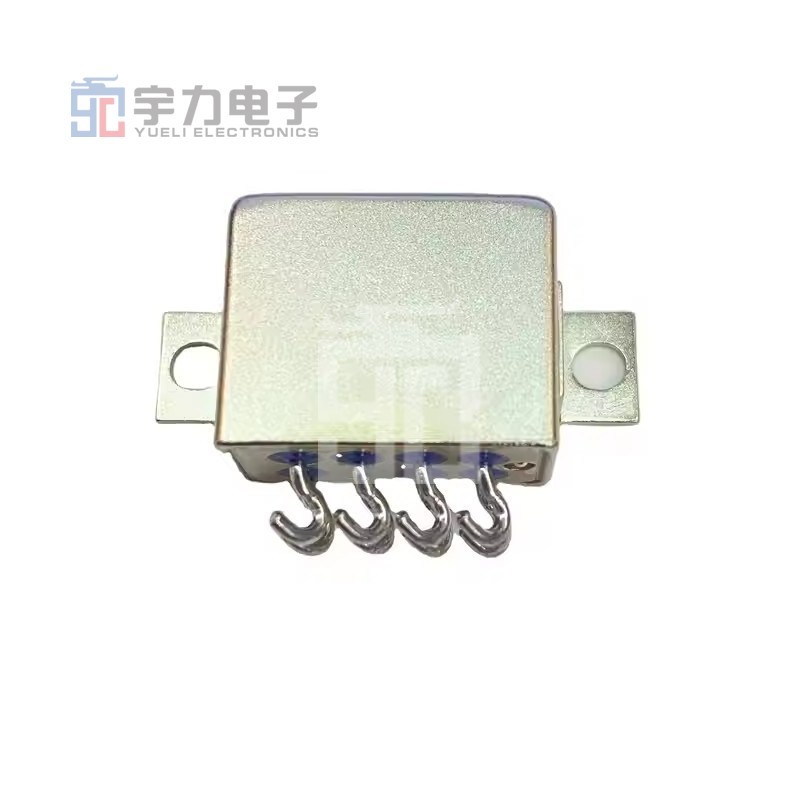Understanding High Power Relays: Essential Components for Robust Electronic Systems
2025-06-13

High power relays are specialized switches that enable the operation of high voltage and high current circuits. These components play a vital role in various applications, including automotive systems, industrial machinery, and power distribution networks. By utilizing electromagnetic principles, high power relays can effectively control larger electrical loads, making them indispensable in modern electronic systems.
One of the key features of high power relays is their ability to handle substantial electrical loads without compromising the safety and integrity of the circuit. This capability is primarily due to their robust construction and the use of high-quality materials designed to withstand intense operational conditions. They are often rated for significant current capacities, allowing them to manage high power applications with ease.
In terms of operation, high power relays typically consist of an electromagnetic coil and a set of contacts. When an electrical current passes through the coil, it generates a magnetic field that activates the relay, closing or opening the contacts. This mechanism allows for the control of larger circuits from a smaller control signal, which is particularly beneficial in applications where space and efficiency are critical.
The applications of high power relays are vast and varied. In the automotive industry, they are commonly used in power distribution systems to control lights, motors, and other high-load devices. Similarly, in industrial settings, high power relays are integral components in machinery that require reliable switching of heavy electrical loads. Additionally, they are utilized in renewable energy systems, such as solar inverters, to manage power flow effectively.
Another significant advantage of high power relays is their ability to provide isolation between the control circuit and the load circuit. This isolation is crucial for protecting sensitive control components from high voltage spikes or transient surges, which can lead to damage or malfunction. As a result, high power relays enhance the overall reliability and longevity of electronic systems.
When selecting a high power relay, various factors must be considered, including current and voltage ratings, contact configuration, and environmental conditions. It's essential to ensure that the chosen relay meets the specific demands of the application to avoid premature failure and ensure optimal performance.
In conclusion, high power relays are essential components in the realm of electronics, enabling the safe and efficient control of high voltage and current applications. Their robust design, operational reliability, and broad range of applications make them a preferred choice for engineers and designers looking to enhance the performance of their electronic systems. Understanding the intricacies of high power relays can lead to better design choices and improved system functionalities.
One of the key features of high power relays is their ability to handle substantial electrical loads without compromising the safety and integrity of the circuit. This capability is primarily due to their robust construction and the use of high-quality materials designed to withstand intense operational conditions. They are often rated for significant current capacities, allowing them to manage high power applications with ease.
In terms of operation, high power relays typically consist of an electromagnetic coil and a set of contacts. When an electrical current passes through the coil, it generates a magnetic field that activates the relay, closing or opening the contacts. This mechanism allows for the control of larger circuits from a smaller control signal, which is particularly beneficial in applications where space and efficiency are critical.
The applications of high power relays are vast and varied. In the automotive industry, they are commonly used in power distribution systems to control lights, motors, and other high-load devices. Similarly, in industrial settings, high power relays are integral components in machinery that require reliable switching of heavy electrical loads. Additionally, they are utilized in renewable energy systems, such as solar inverters, to manage power flow effectively.
Another significant advantage of high power relays is their ability to provide isolation between the control circuit and the load circuit. This isolation is crucial for protecting sensitive control components from high voltage spikes or transient surges, which can lead to damage or malfunction. As a result, high power relays enhance the overall reliability and longevity of electronic systems.
When selecting a high power relay, various factors must be considered, including current and voltage ratings, contact configuration, and environmental conditions. It's essential to ensure that the chosen relay meets the specific demands of the application to avoid premature failure and ensure optimal performance.
In conclusion, high power relays are essential components in the realm of electronics, enabling the safe and efficient control of high voltage and current applications. Their robust design, operational reliability, and broad range of applications make them a preferred choice for engineers and designers looking to enhance the performance of their electronic systems. Understanding the intricacies of high power relays can lead to better design choices and improved system functionalities.
Previous:


